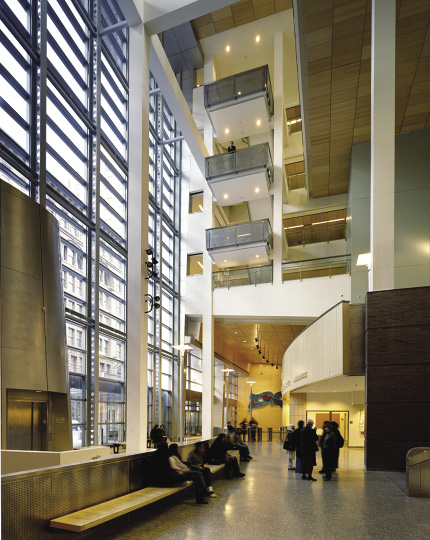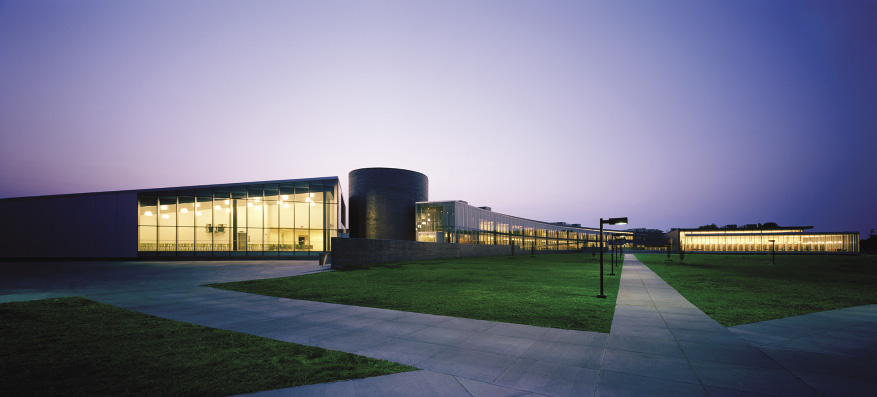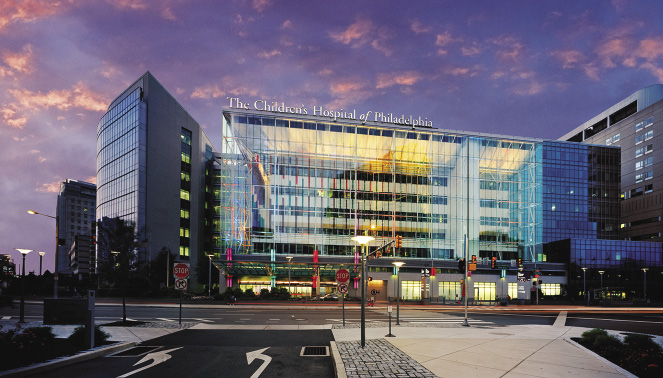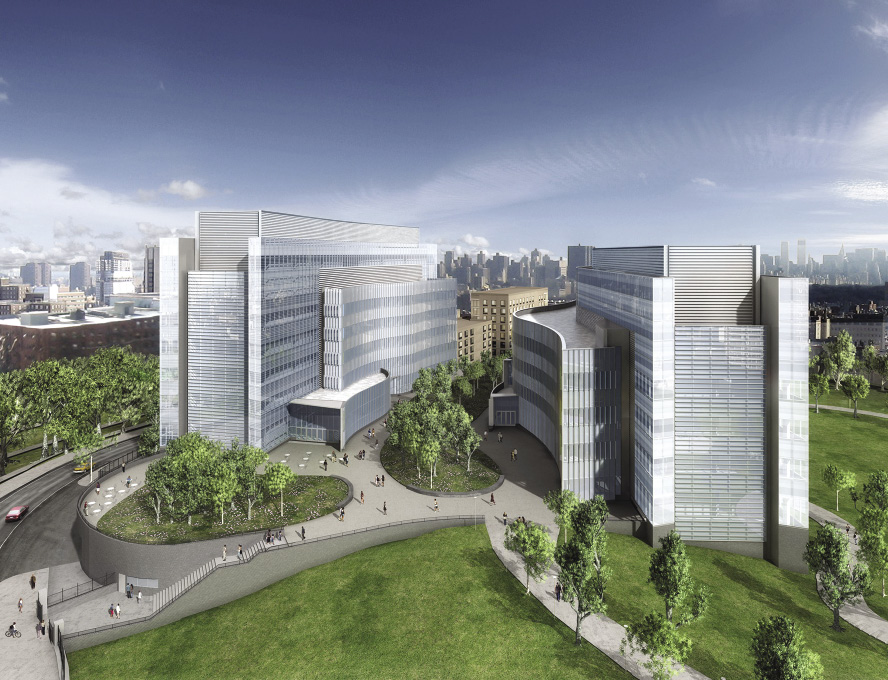


![]()
ONLINE

Creating Places of Inspiration and Distinction
Editors’ Note
Jill Lerner is a Principal at Kohn Pedersen Fox Associates, an international design firm with a range of influential projects around the globe. As the 2013 President of AIA New York, she focused on the theme “Global City/Global Practice,” and on the recent exhibition “Practical Utopias; Global Urbanism in Hong Kong, Seoul, Shanghai, Singapore, and Tokyo.” A leader in academic, medical, and research work at the firm, she speaks frequently on topics including Global Practice, Women in Architecture, Academic Planning, Design, and Professional Leadership. Jill served as a Cornell University Trustee and Chair of the College of Architecture, Art & Planning Advisory Council; other activities include board membership (and Building Committee Chair) of the Asian University for Women, the Salvadori Center, and the President’s Advisory Committee of the College of Creative Studies. In 2001, she co-chaired the Memorial Process Committee after 9/11 for New York New Visions.
Company Brief
Operating as one firm with six global offices, KPF (www.kpf.com) is one of the world’s preeminent architecture firms with 600 staff members from 43 different countries who speak more than 30 languages. The firm’s diverse portfolio comprises corporate, investment office buildings, hospitality, academic, medical, research, civic, museum, transportation, residential, and mixed-use projects, and includes more than 70 projects that are certified or pursuing green building certification.
Did you know early on that this was where you wanted to spend your career?
Most women my age were not exposed to architecture at a young age the way that men were. I had to take Home Economics instead of Shop.
But I liked to draw, and I was good at math and science. I knew that if I got into an architecture school, that it would be my path. Architecture encompasses art, culture, math, and technology. It is a very rich profession that involves working with people as well as improving society and the built environment.

Baruch College Newman
Vertical Campus main lobby
Is the impact of architecture clearly understood?
It may be recognized in other cultures more easily than in ours. This is one of the reasons I wanted to be the President of the New York AIA (AIANY): the AIANY’s mission is to reach out to our leaders in order to ensure that the people making decisions about the economy, tourism, construction, housing, zoning, and infrastructure – all issues involved in the architecture and design professions – are communicating with architects.
It’s about spending money wisely on design that adds value to our community and generates impact. The High Line in New York City, for instance, regenerated an entire neighborhood.
At all scales, architecture and design are paramount. Over the past 12 years, the Bloomberg Administration has done a good job of emphasizing the importance of design, so that many New Yorkers now recognize the difference, and see how it benefits their communities.
The goal of The Center for Architecture, and my role, is to make sure that this message remains front and center, and that New Yorkers gain a greater understanding of the importance and impact of design.
Buildings have a long lifespan.

Arizona State University McCord Hall at
W. P. Carey School of Business in Tempe, Arizona
What makes KPF so special?
KPF is a fabulous place. We grow our staff primarily from within, so many people have worked here for most of their careers, building a strong culture of teamwork. Our principals – myself included – are involved in our projects from start to finish; and there aren’t too many firms where you can say that.
I have worked elsewhere and I can appreciate that quality is the foremost driver at KPF, and that all projects, regardless of their size or budget, are treated with absolute rigor and enthusiasm when it comes to seeking out the best solutions.
With each project, we aim to design a great building that solves a specific problem, uses materials in an innovative way, and creates a place of inspiration and distinction. I lead academic, medical, and research projects, so I’m intimately engaged in the functional planning, budget and management issues, talking to the users about the nature of the inside as well as the outside.

Florida International University Alvah H. Chapman, Jr.
Graduate School of Business, Miami
On the exterior, the form of the building and the way it meets the street contributes to the public realm and the visitor’s sense of arrival. But the inside is equally important. It’s how people use the building every day – it promotes their work, their efficiency, their ability to collaborate, and the joy of coming to work each day.
One of the things that makes KPF special is that we don’t operate with a studio system, so there is a free flow of ideas among teams. You can work on a commercial project in Asia, then do an academic building, an airport or a cultural facility, all within the New York office or working in multiple offices. This allows us to take advantage of our international practice and enables the ideas to flow from one project team to another, or even between countries and cultures. We also move staff around among KPF offices, which helps each of us to share our personal expertise globally.

Columbus Learning Center, Columbus, Indiana
We have amazing clients who have given us tremendous opportunities. They trust us to come up with innovative solutions. We have repeat clients who have worked with us for many years, and new clients who push us in different directions and encourage us to push them.
We take sustainability very seriously and have developed real expertise, particularly over the past 10 years. We have done some of the most sustainable buildings in Asia, including Hysan Place, the first LEED Platinum-certified building in Hong Kong.

Children’s Hospital of Philadelphia
How have opportunities for women evolved from when you first started?
I have witnessed a mega-shift in the culture and practice of architecture, as well as at the university level, over the course of my career. When I started architecture school, we were 18 women out of a class of 96. But by the time I graduated five years later, the entering freshmen were 50/50. So there was a huge shift from the late ’60s to the late ’70s.

Rendering of the CUNY Advanced Science Research
Center and CCNY Science Building, New York
Since then, it’s been a matter of figuring out how women can remain in the pipeline and rise up to higher levels, because it’s a demanding profession and people work long hours. Initially, there was not much flexibility for working and raising a family, but that has improved over the years. We all do better work having a richness and diversity of gender, race, culture, and background on our design teams.
It’s still a challenge, though – architecture remains one of the lowest-ranking professions in terms of women in leadership positions. We need to continue to focus on this issue, and work harder to mentor and encourage women to stay with the profession and to rise up through the ranks.
Do you ever think about slowing down?
I’m still engaged in expanding our academic work overseas, and I have enjoyed being President of the AIANY and taking on a different level of leadership within the profession and in the city. My theme for the year has been Global City/Global Practice and I pushed the notion that we have to look beyond our borders and see what other cities are doing. We need to look at how they handle sustainability, connections to their airports, and density. Overseas, we see other cities integrating more complex mixed-use projects than we have typically done here – using tall buildings to create vertical cities.
As we start a new mayoral term, it is critical that we continue to invest in our city’s future, bringing the best ideas to help shape the design of our physical environment.•